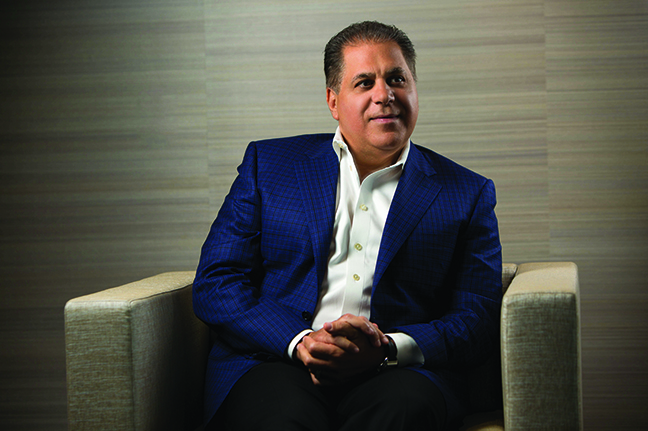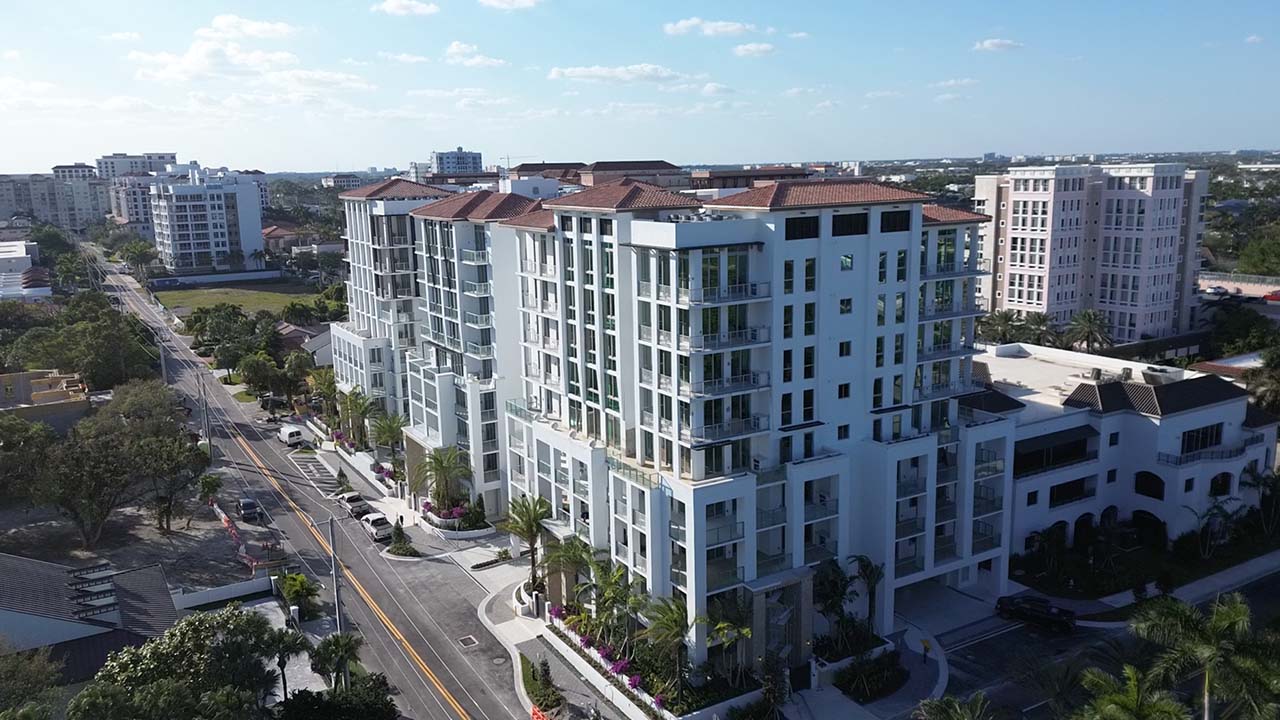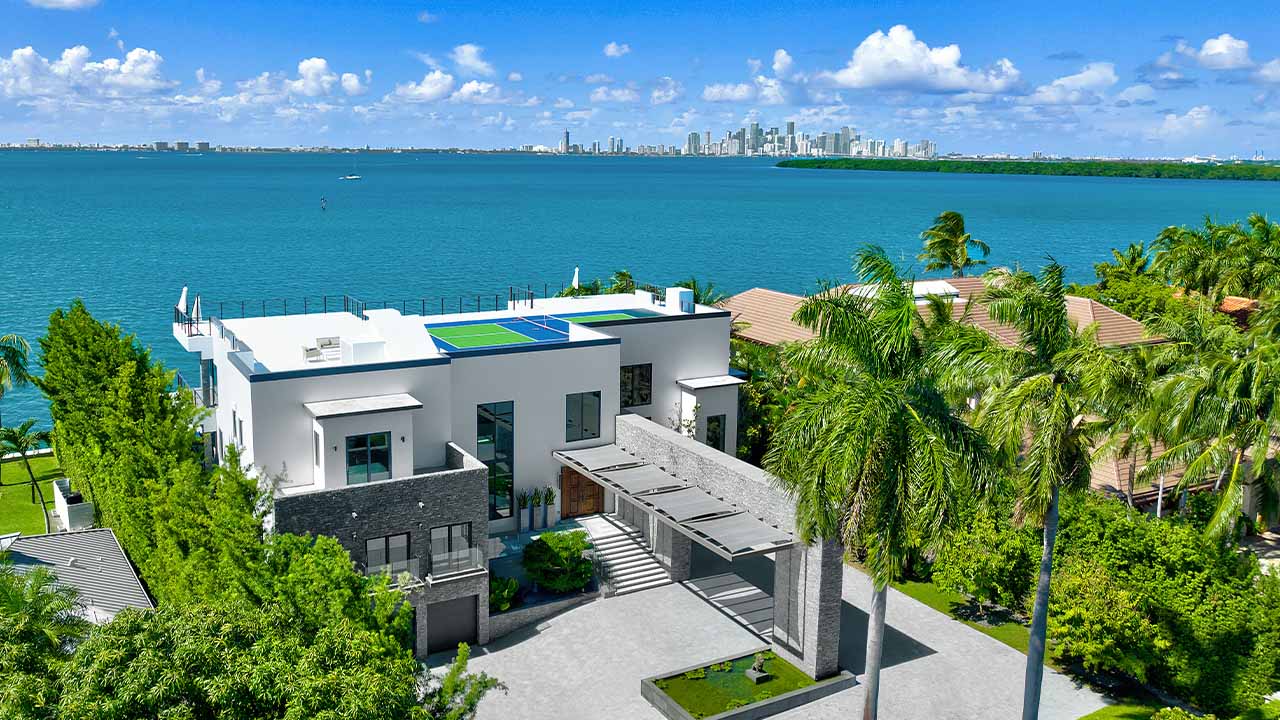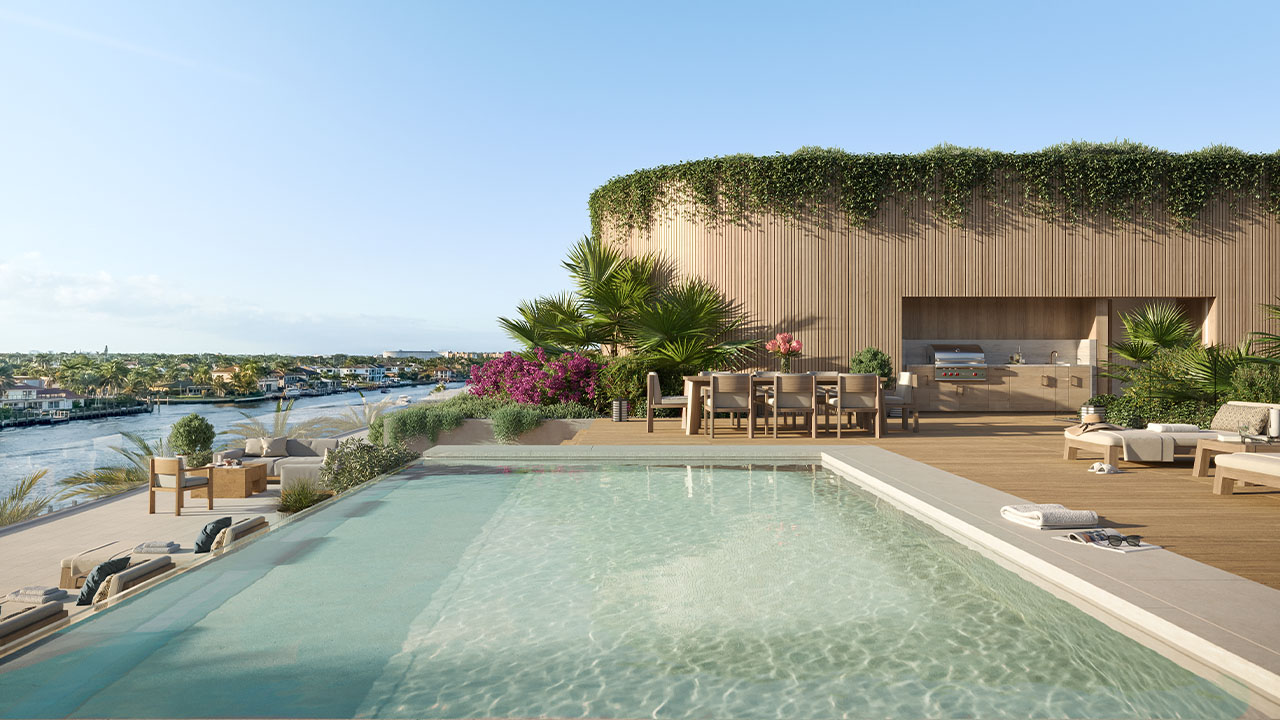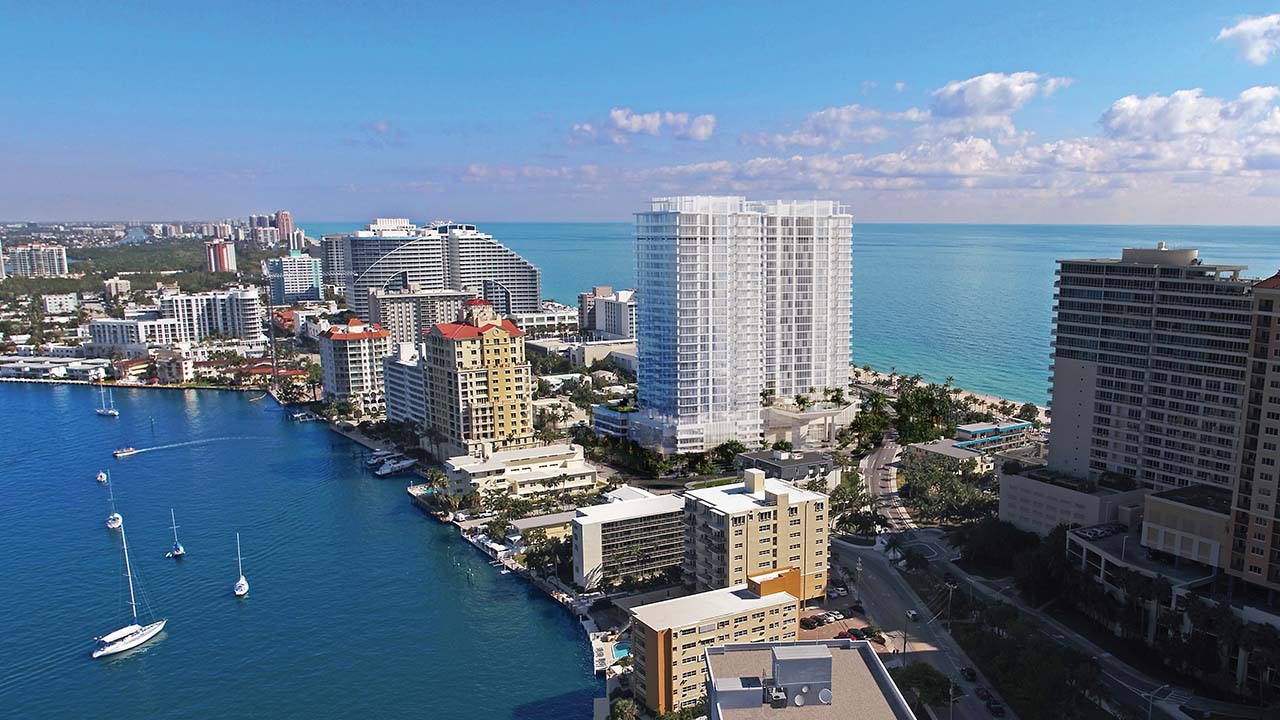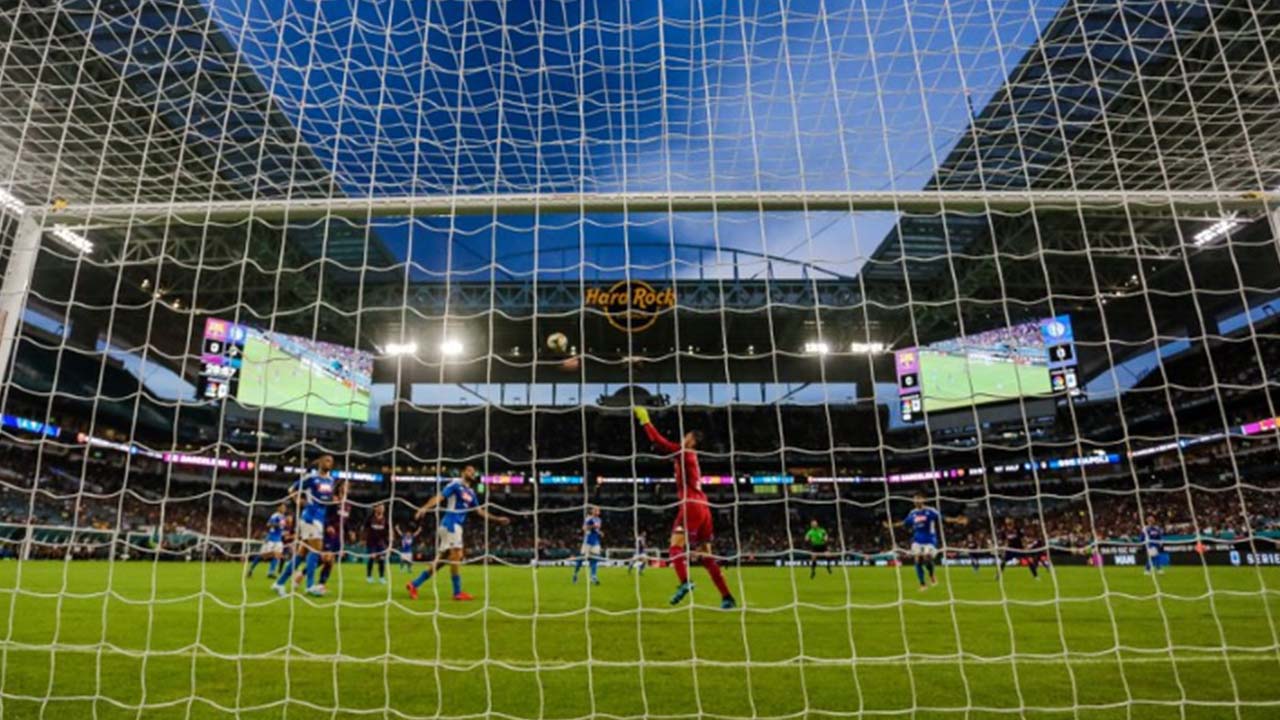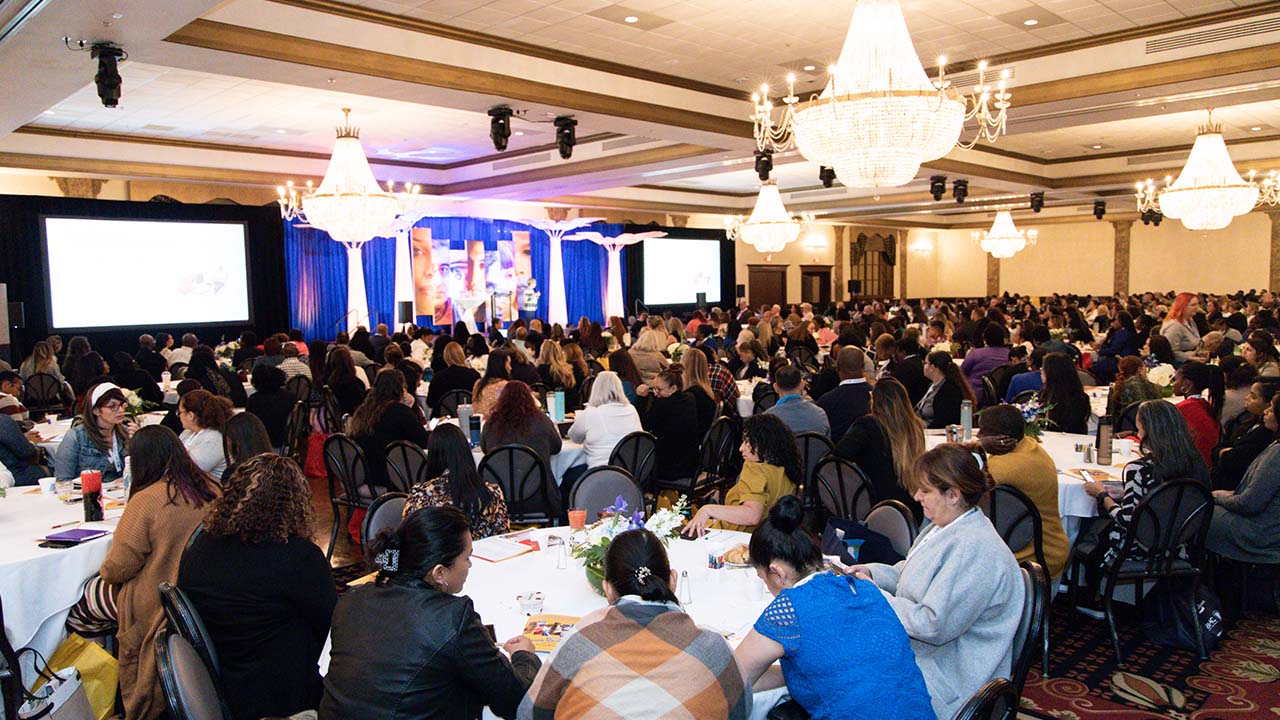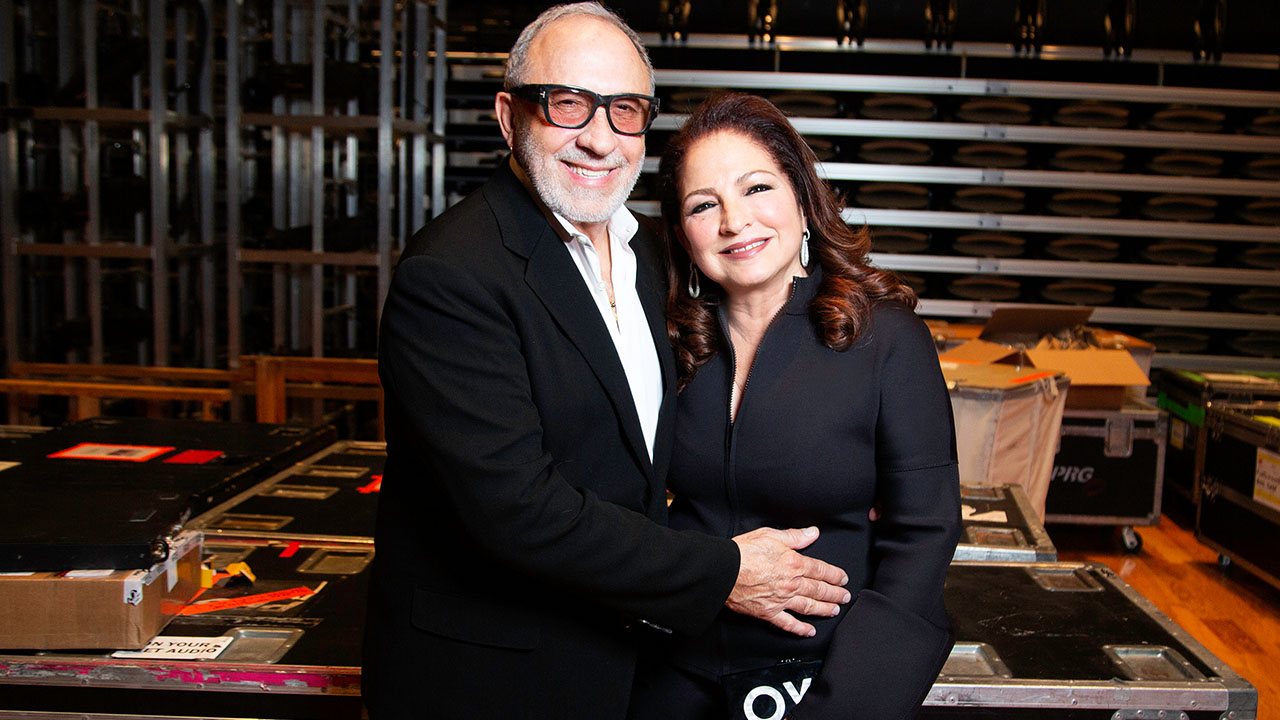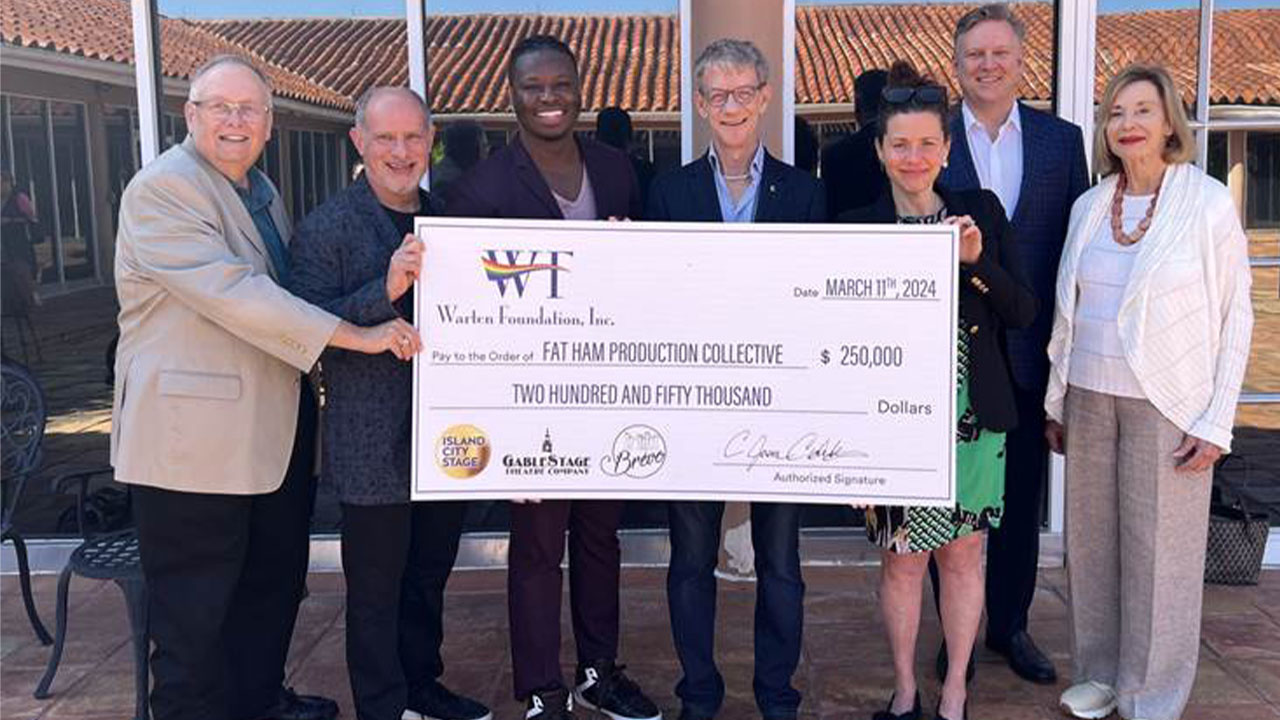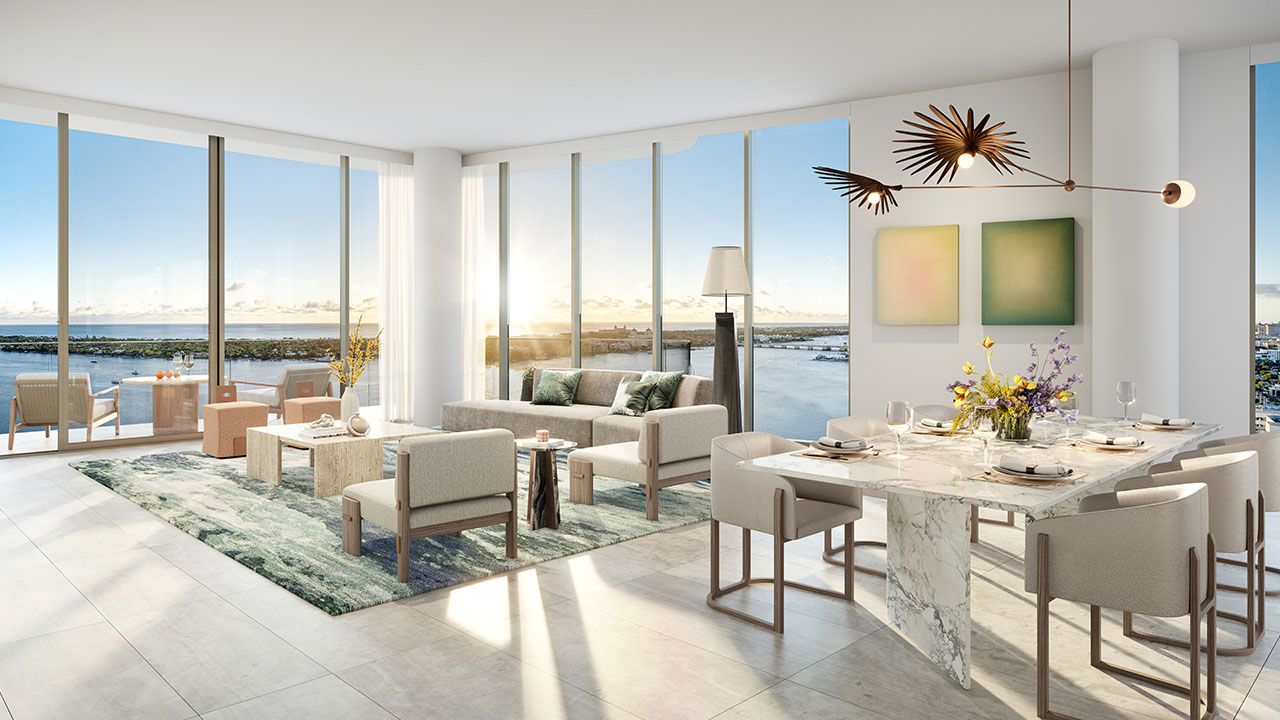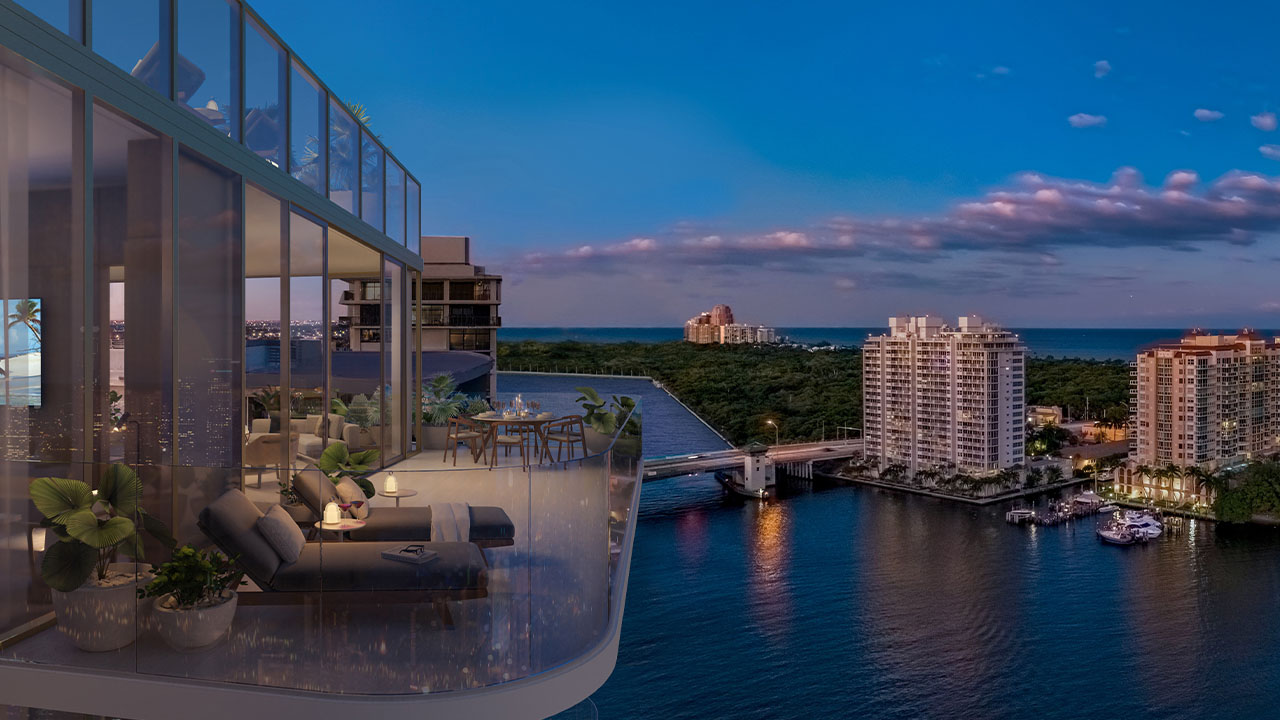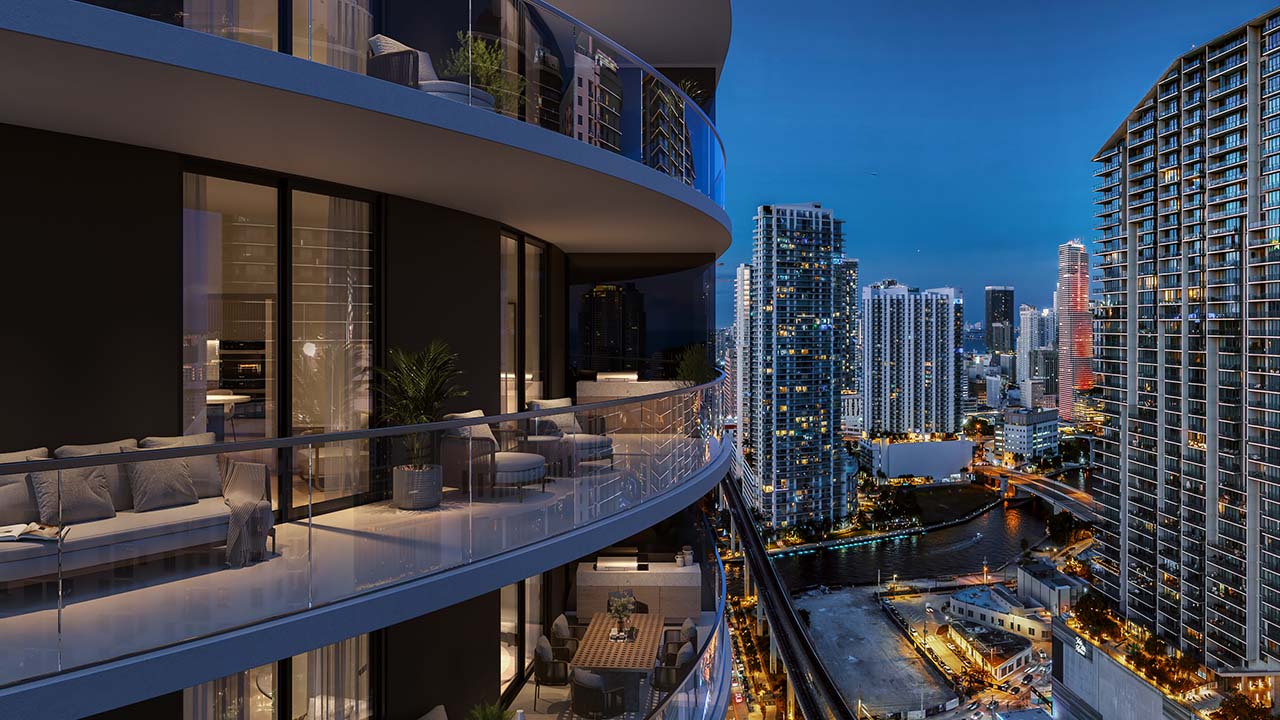Art Falcone works his way up from McDonald’s to real estate projects nationwide
By Kevin Gale | Photography by Larry Wood
It would be tough to find another developer and investor who is having more impact on South Florida these days than Art Falcone, founder and CEO of Falcone Group, whose $3 billion Miami Worldcenter project is poised to transform downtown Miami. The group is also responsible for tearing down Plantation’s former Fashion Mall to create a live, work and play community, along with two Paramount condo projects: one at Worldcenter and one on Fort Lauderdale’s beach with development partner Daniel Kodsi.

In addition, Falcone’s Encore Capital Management has two funds and a private real estate investment trust with nearly
$2 billion under management. And earlier this year, it opened The Encore Club at Reunion, a 742-home vacation resort near Walt Disney World.
SFBW interviewed Falcone at his headquarters in Boca Raton. The following transcript has been edited for brevity and clarity.
Give us an overview of what you are working on these days. Let’s start with Miami Worldcenter, which has been called the second-biggest U.S. urban development project after Stephen Ross’ Hudson Yards in New York City.
We are approved for approximately 15 million square feet – the same size as Hudson Yards. In the first phase, we have the iconic Paramount Miami Worldcenter condo tower, which is about 50 percent sold. We are also doing retail, approximately 400,000 square feet. I just got back from the International Council of Shopping Centers show. We will be doing leases over the next six months.
We just started construction of the apartment on Block G (Seventh Street Promenade). We have ZOM Living coming in on one of the blocks doing a luxury apartment tower [Luma at Miami Worldcenter] as well. The Marriott Marquis Miami Worldcenter with MDM Hospitality Group and principal Ricardo Glas gained approval for its tax increment financing. That’s the largest convention center hotel in the state of Florida. [Plans call for 1,800 rooms and 600,000 square feet of convention space.] Over the next month or so, we have other deals on which we have signed letters of intent or we are finishing up signed contracts. And we have other components for which we are making announcements.
The first phase of the development, between hotels, condos for sale, luxury apartments, luxury retail and garages, will be about 7 million square feet. We broke ground in December 2015.
Tell us about the change in retail plans from an indoor mall to a high street concept.
We had some bumps in the road in December. We were feeling that much of last year. That’s when we made the difficult decision in the fourth quarter to exit the large boxes and to go with more of a retail and restaurant experience. We took the roof off the mall. Now the largest store will be more like 35,000 square feet. And there will be a lot more specialty shops.
Give us an overview of Encore.
We have been an opportunistic buyer of real estate across the country: Portland, San Francisco, Los Angeles, Phoenix, Dallas, New York, New Jersey and all of the Florida markets – a national footprint. Presently, in Encore and Rescore, a private real estate investment trust, we have approximately 38 active projects around the country. That pretty much encompasses urban mid- to high-rise buildings that have either for-sale or for-rent residential spaces with a commercial/retail component on the first floor. We then have mixed-used projects, such MargaritaVillage and the Reunion Resort in Orlando, Twin Creeks in Jacksonville and Canyon Ranch in Tampa. All of these usually have hotels, for-rent and for-sale residences and retail and office space. Miami Worldcenter is under family office as an investment.
Worldcenter hasn’t been the easiest project to pull off. There were plans before the Great Recession that didn’t happen. How were you able to persevere?
We went through some very difficult times. We had other partners in the deal. We had banks in it and two of them failed. Some of the property went through foreclosure proceedings based on the Great Recession. We then recapitalized and basically bought our own properties through foreclosure.
For years, Brickell boomed and downtown Miami on the north side of the Miami River seemed to lag. How is Worldcenter changing that?
No. 1, when we turn the clock ahead five years, people will realize Worldcenter is the core of Miami. It is the core geographically, with the Design District and Midtown to the north, and the true middle of town and Brickell just to the south. We are just south of I-395. All of the government buildings are around us. Thirteen years ago, AmericanAirlines Arena was new. There was no performing arts center or museum of science. Miami Dade College was a two-year school. The federal courthouse is new. All those things make up the core of a city. There have been billions of dollars of investment around our property, which is sort of like the hole of the donut.
No. 2., we are planning all the sidewalks to be much wider than anything done in Miami. Most of Miami was planned in the 1960s and ’70s, so your sidewalks are
4 feet wide. It was all about being in cars. That doesn’t set up to make a great urban environment. For our walkability, when you look at Seventh Street and the paseo going north and south, the sidewalks are 40 to 70 feet wide. That’s what you see in cities, such as New York’s Fifth Avenue.
We will have the No. 1 access for transportation with Eighth Street and 11th Street ramps to I-95 and access off I-395 and five stops on the Metromover, two on the east-to-west tracks and three on the north-to-south. The MiamiCentral station with the Brightline high-speed rail service is being built along our western boundary. It’s the first grand central station being built in our country in 100 years.
Tell us what you are doing with the former site of the Fashion Mall in Plantation.
The Sheraton hotel there is getting a face-lift and millions of dollars poured into it. The inside of the office building is being gutted – that’s 160,000 square feet. We are potentially looking at a second office building. Then, we are looking at about 220,000 square feet of retail and 700 or so residential units. It will truly become the city center of Plantation.
We will have the live, work and play environment with wide sidewalks and a sense of place. It will be programmed properly with arts and cultural events and family events.
What type of investors do your funds attract?
Our base is institutional. It could be insurance funds, pension funds and sovereign funds. We’re the only fund in America that is fully integrated as a financial firm that actually has the financial capability of intellectual capital of people –
and we develop and build. We do that all in house.
The first story I did about you and your brother Ed was in 1986. You had just sold nine McDonald’s in New York for $3.7 million and bought 38 Wendy’s in South Florida. How did that end up?
We left upstate New York for the allure of South Florida. Back then, we had condos we had bought here in the early 1980s. The main reason we wanted to be here was the lifestyle and the warm weather. We took a big risk in coming here. Wendy’s was a great company and growing. They went through some hard times after the “Where’s the Beef?” campaign.
The food business got us into the real estate business. We would own the real estate under the stores and lease it back to the restaurant company. Then we started speccing land to build shopping centers in areas where we had seen strong growth.
We studied where housing opportunities were going to be and started Transeastern Homes around 1988. We were one of the approved builders for Westinghouse and Arvida [the developers of Coral Springs and Weston]. We grew that business to become the largest private builder in Florida.

You seem to have a good sense of timing. The first example I noted was in 1989, when you capitalized on distressed housing debt. How did you spot the opportunity?
We weren’t taking much risk in the early days of Transeastern. We were building housing on lots the two companies were selling to us.
We went into a recession in 1988 or 1989. There were banks that blew up and also the savings and loan crash. We started to look at paper where the FDIC set up the Resolution Trust Corp. to act as the clearinghouse for distressed debt. Through those channels and normal channels of banks that wanted to get rid of the paper, we were shown opportunities to buy master-planned communities. Instead of buying lots for $100,000, we were able to buy whole mastered-planned communities for $5,000 or $10,000 a lot.
Our communities were large in size. The amenities we built in those communities were much more diversified than our competition. We had a wow factor sense of arrival. We had a lot of amenities in the clubhouse. Customers rewarded us.
The second timing that seems very astute was selling to Technical Olympic in 2005, a total of $1.6 billion in deals. What led to that?
Around 2004, I was at a big grand opening in Orlando for a large-scale community called Independence. We had done all these big lottery events to be able to give people the opportunity to buy a house. We would literally sell 100 houses in a week
I was walking through the tent, watching the mortgage company taking the mortgage applications and noticing people that were getting the approvals for Fannie Mae and Freddie Mac in an hour. When I started business, I was accustomed to 20 percent or 10 percent down and private mortgage insurance. That, all of the sudden, was thrown out the window. People were buying units with 2 or 3 percent down and getting approval in an hour from government agencies without verification. That seemed strange to me. We were selling 300 in a weekend and our margins were high. When a business hits a peak, you usually have outsized margins and you see euphoria. It seemed like the right time to leave the party.
You got some great talented partners when you started Encore: Anthony Avila, who ran investment banking for JMP, and William Powers, a senior exec for PIMCO. How did you guys get together?
Tony had been my investment banker since 1999. He ran the home building practice at JMP, one of the largest real estate investment bankers. He worked on selling the deal and brokering the deals. About a year after selling Transeastern, I was looking to redeploy and do new things and said to him, “Why don’t you join the team? You can work with the team you had at JMP and start an office in San Francisco.” If you want the right intellectual capital, you have to go where the people are.
Bill Powers was one of the top four guys at PIMCO, a multibillion-dollar business. I met him through a mutual friend in Aspen. I was telling my friend what I wanted to do go back and find opportunities in distressed real estate. Bill was telling his friend that he wanted to do something different from the past 27 years. Bill set up PIMCO’s global business outside the United States. I think he personally managed $400 billion, so he’s very well-noted in the banking community. He was looking to do something different because he was living on planes. He surpassed the half a million miles a year travel club.
Tell us about your childhood. I understand your father was a police officer.
I was born in Queens. Dad was a police officer, but not as one that would be patrolling in a car. He was one of the first 12 officers in New York who started the Police Boys Club, which you know today as the Boys & Girls Club. He had boxing, football and baseball programs.
By the age of 6 or 7, I would go to work with him. I went to college for about a year and half and studied accounting. I was kind of bored. My brother Ed was in the McDonald’s system, so I started working in management training while I was in school. The work overcame my school efforts, so I stuck with that. I became the youngest McDonald’s operator in the world at 21.
Ed became a franchisee in 1979 and I became a franchisee in 1981. Ed is retired now. My oldest brother, Bob, also came here in the late 1990s and became a partner as well. The president was Neil Eisner. He still works with us today.
Is your father still alive?
Yes. He’s 90 and lives on my property. I have three boys, Nick, Dan and Matt, who were the first franchisees in BurgerFi. They have five stores. They are basically in the food and hospitality business. They are also running the Encore Club at Reunion.
A Sample of Current Falcone Group Projects
Arizona
Scottsdale: The Standard at Valley Ho, 135 luxury apartments and penthouses
California
Hollywood: 358 apartments and commercial space in the “South of Sunset” area
Los Angeles: Latitudes at Silverlake, 53 town homes
La Jolla: Aveline, 18 luxury homes near downtown
Pasadena: The Greyson, 35 luxury condos downtown
Redondo Beach: One South, 52 condos and town homes
Sacramento: McKinley Village, a 49-acre urban village with 336 homes
San Diego: Laurel Creek, 71 condominium units
San Francisco: 1075 Market Street, 90 condos
Florida
Doral: The Landmark at Doral, 631 luxury apartments and 40,000 square feet of retail
Fort Lauderdale: 348-unit multifamily project at 405-417 NE Second St.
Jacksonville: Twin Creeks, a master-planned community with approximately 2,500 homes, two schools, public parks, 1 million square feet of commercial/retail space and 700,000 square feet of office space
Kissimmee: MargaritaVillage, a destination resort featuring a hotel, timeshare units, condos, resort vacation homes, market rate apartments, lifestyle retail space and a 12-acre destination water park
Miami: Miami Worldcenter, a $3 billion mixed-use project with residential, retail, hotel and commercial uses
Pasco County: Mirada, a 1,889-acre master-planned development near Tampa with 4,300 homes, 135,000 square feet of commercial space, 100,000 square feet of office space and an 18-hole golf course
Plantation: 250,000 square feet of lifestyle-oriented retail space, 250,000 square feet of office space and up to 750 apartment units in a pedestrian-friendly setting
Reunion: Approved for 2,500 condos, hotel rooms and homes that will be developed, beginning with The Encore Club at Reunion, which will have 742 vacation rental homes offering between five and 13 bedrooms, a clubhouse and a water park
New Jersey
Jersey City: 290 apartments in the McGinley Square neighborhood
Oregon
Portland: The Rise, 87 apartments and nine live/work spaces



